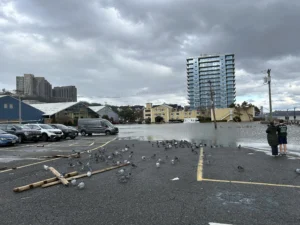
Mold growth inside your home or business is never a good thing. Not only is mold unpleasant, unsightly and damaging to your property, it can also be hazardous to your health, too.
In many cases, it’s easy to identify mold growth in your property. It’s normally found in areas that have higher levels of humidity and/dampness, like basements and bathrooms. Mold can also grow in areas that have experienced water damage (leaking pipes, excessive condensation, flooding). When water or moisture is left standing in these areas for a long period of time or is not properly dried, then mold growth occurs.
Sometimes this mold growth is easy to spot. You’ll see black, brown or green spores on the surfaces that are exposed to humidity, moisture or water damage. Typically, mold growth is seen on window frames, ceilings, floors, carpets, furniture, and walls.
Unfortunately, mold can also grow out of site. Many times mold is hiding and thriving in places you can’t see. One of those common areas is inside your drywall and walls.
Signs That Mold May Be Growing Behind Your Walls
To protect your health and your property from excessive damage, you should keep an eye out for some of the telltale signs of mold growth behind your walls:
Stains
Seeing stains on your walls, ceilings, trim, floorboards or floors is not an automatic identifier of mold growth. However, it is a sign of previous or existing water damage. That being the case, any exposure to water and moisture (even minimal levels) can lead to mold growth.
Odors
What your eyes can’t see may be found with your nose. That’s right. Mold isn’t just unsightly, it’s also pretty foul smelling, too. What does mold smell like? Some people say mold smells like rotting wood or wet dirt. Others say mold smells like a wet dog, sweaty socks, or a basement/garage that’s musty and needs airing out. While the opinions vary, everyone agrees that mold smells awful. If you notice any of these smells in your property (especially in areas such as basements, attics, bathrooms, and crawl spaces), it may be a sign of mold growing behind your walls.
Dampness, Wetness or Condensation
Does a stain on your wall or ceiling feel damp or wet? Is there visible condensation on your wall or ceiling? If so, then there is cause for concern. While it may not mean mold is currently growing, it soon will be if the cause of the stain is not addressed. Stains in these areas are signs of water damage. The cause could be a leaky pipe, clogged downspouts and rain gutters, cracked seals/caulk along window frames or bath tubs, foundation cracks, damaged HVAC systems, a damaged roof or flooding. Whatever the cause, if the source of the water damage is not repaired and the area of the water damage is not thoroughly dried out, mold will grow.
Symptoms
One of the most serious signs of hidden mold growth is your health. Mold isn’t just damaging to property. It can also cause health issues or worsen existing medical conditions (especially respiratory conditions like asthma, allergies and chronic obstructive pulmonary disorder). If you or others in your property begin to feel any of the following symptoms while indoors, it could be a sign of mild or severe mold growth:
- Slight nasal congestion
- Runny nose
- Eye irritation (red, itchy or watery)
- Skin irritation (red or itchy)
- Sore throat
- Persistent headaches
- Wheezing
- Chest congestion
- Lung irritation
- Difficulty breathing
How To Stop Hidden Mold Growth In Your Property
The factors listed above could be indicators of mold hiding beyond your drywall, walls or ceiling. If you spot any of these signs or, more importantly, you experience any of the symptoms of mold exposure, it’s time to take action.
If you believe your home or business has a mold issue, call FloodCo USA. Our team of certified specialists will determine if your property has a mold issue and perform the necessary steps to remove it. Plus, they’ll take measures to ensure that the mold does not spread to other areas of the property and continue to grow in the formerly exposed areas.
Signs of indoor mold growth should never be ignored.
Contact FloodCo USA, the mold removal and remediation experts, today for your peace of mind!


